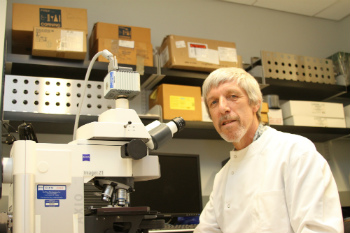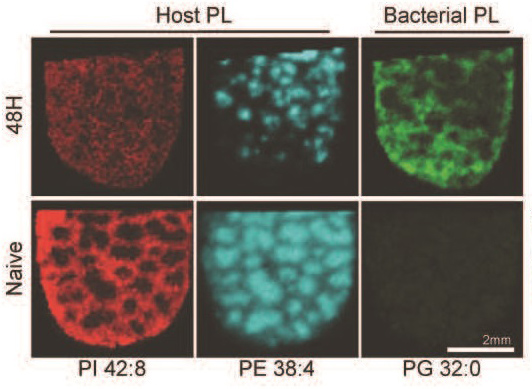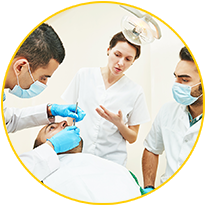 Baltimore, Md., January 19, 2017 – New research by scientists at two University of Maryland, Baltimore schools (UMB) is highlighted in a special issue of Pathogens and Disease.
Baltimore, Md., January 19, 2017 – New research by scientists at two University of Maryland, Baltimore schools (UMB) is highlighted in a special issue of Pathogens and Disease.
The issue, which includes work by scientists at UMSOD and UMSOM focuses on key issues in infection and immunity, which are crucial research areas at the institution. It includes 22 articles, mini-reviews, and commentaries on a range of infectious agents, including Ebola and Clostridium difficile, as well as new vaccine approaches at the UMSOM Center for Vaccine Development and comparative genomics studies of protozoan parasites at UMSOM Institute for Genome Sciences.
“This special issue, focusing on the work of one institution provides a time capsule of the state-of-the-art research being done at UMB in infectious disease and immunity research,” said Editor-in-Chief of Pathogens and Disease, Patrik Bavoil, PhD, Professor & Chair of the Department of Microbial Pathogenesis at UMSOD and Adjunct Professor in the Department of Microbiology and Immunology at UMSOM. “It also provides a glimpse of the collaborative spirit between the School of Medicine and the School of Dentistry in terms of infectious disease research.”
“I’m very proud to be a part of this undertaking,” said one of the editors of the issue, James B. Kaper, PhD, Senior Associate Dean for Academic Affairs and Professor & Chair in the Department of Microbiology and Immunology at UMSOM. “From biofilms to Ebola, this work by scientists at UMSOM and UMB is really advancing our knowledge in important ways.”
One article details an investigation into the antibiotic-resistant superbug C. difficile, which causes 30,000 deaths in the United States each year and for which, as yet, no effective prevention is available. Antibodies against the bacterial toxins, the culprit of the disease, have proven to be protective against the infection in animal disease models and in clinical trials. However, antibodies are impractical for prevention due to their high cost and short life in serum after delivery. In this study, Hanping Feng, PhD, Professor in the Department of Microbial Pathogenesis at UMSOD and Adjunct Associate Professor in the Department of Microbiology and Immunology at UMSOM, and his colleagues engineered an attenuated virus for delivering anti-toxin antibodies. They demonstrated that virus-infected mice express highly potent anti-toxin antibodies that are fully protective against both primary and recurrent C. difficile infection for up to two months. This novel strategy has great potential for the prevention against C. difficile infection.
A second article, co-authored by Alison J. Scott, PhD, Research Associate Professor in the Department of Microbial Pathogenesis at UMSOD, along with Robert K. Ernst, PhD, Professor in the Department of Microbial Pathogenesis at UMSOD and an Adjunct Professor in the Department of Microbiology and Immunology at UMSOM, focused on new methods and tools to investigate lipid A, advancing the study of lipids in the interactions of bacteria and their hosts. The researchers improved the ability to detect host and bacterial lipids as much as 100-fold, employing the matrix norharmane in mass spectrometric imaging experiments. The paper highlights paths for  improving the understanding of how pathogens interact with their animal and human hosts.
improving the understanding of how pathogens interact with their animal and human hosts.

Host-pathogen lipid images from Francisella Novicida infected mouse spleens using mass spectrometry imaging.
Alan Schmaljohn, PhD, a Professor in the Department of Microbiology & Immunology at UMSOM, along with George Lewis, PhD, a Professor of Microbiology and Immunology at UMSOM and director of the Division of Vaccine Research at the UMSOM Institute of Human Virology, co-authored a review paper looking at how Ebola antibodies provide protection. It appears that many Ebola antibodies work not primarily by neutralizing the virus, but by targeting cells that have already been infected by the virus. By doing this, the cell-targeting antibodies decrease transmission of the virus from infected cells to healthy cells. The paper illustrates the complex ways by which these antibodies protect against the disease.
Tonya Webb, PhD, an Associate Professor in the Department of Microbiology & Immunology at UMSOM, contributed two papers. In one, she focuses on sphingosine 1-phosphate (S1P), a molecule that plays a key role in immunity and inflammation. She argues that it may be possible to target the S1P pathway as a way to fight cancer.
In another paper, Webb also looked at the central signaling pathways that activate the innate immune system. One of these pathways is the AMPK pathway, which gets activated during viral infection. Webb and her colleagues found that the pathway is also active in human tumor cells. This finding has potential clinical significance, because there are certain drugs that can induce activation of the AMPK pathway, including the already-approved diabetes drug Metformin. Treatment with these drugs might increase the ability of the immune system to recognize and kill cancer cells.
“The research being conducted here in dentistry and medicine will significantly advance our understanding of the treatment and prevention of an array of infectious diseases. This issue highlights some of the innovative, collaborative work at the University of Maryland,” said School of Dentistry Dean Mark A. Reynolds, DDS, PhD.
“This cutting-edge work really shows the breadth and depth of the work being done here on infection and immunity,” said UMSOM Dean E. Albert Reece, MD, PhD, MBA, who is also the Vice President for Medical Affairs, University of Maryland, and the John Z. and Akiko K. Bowers Distinguished Professor. “Our scientists are using so many exciting approaches and so many tools to analyze and unravel these urgent real-world problems, and I know that this work will continue, and will eventually lead to real-world solutions.”
The illustration contains excerpts from the special issue and a design courtesy of Oxford University Press showing elements of the cover of Pathogens and Disease and the logo of the Federation of European Microbiological Societies.
####
The University of Maryland School of Dentistry is the direct descendant of the world’s first dental college, the Baltimore College of Dental Surgery, which was chartered in 1840. Located on the campus of the University of Maryland, Baltimore, it is ranked eighth by the NIH among U.S. dental schools in research funding and seeks to foster the next generation of leading oral health care professionals while shaping the future of dental health research, education, and care. Comprising 12 divisions, UMSOD conducts pioneering research and is committed to local and global community service; it provides services to nearly 27,000 patients annually.
###
The University of Maryland School of Medicine was chartered in 1807 and is the first public medical school in the United States and continues today as an innovative leader in accelerating innovation and discovery in medicine. The School of Medicine is the founding school of the University of Maryland and is an integral part of the 11-campus University System of Maryland. Located on the campus of the University of Maryland, Baltimore, the School of Medicine works closely with the University of Maryland Medical Center and Medical System to provide a research-intensive, academic and clinically based education. With 43 academic departments, centers and institutes and a faculty of more than 3,000 physicians and research scientists plus more than $400 million in extramural funding, the School is regarded as one of the leading biomedical research institutions in the U.S. with top-tier faculty and programs in cancer, brain science, surgery and transplantation, trauma and emergency medicine, vaccine development and human genomics, among other centers of excellence. The School is not only concerned with the health of the citizens of Maryland and the nation, but also has a global presence, with research and treatment facilities in more than 35 countries around the world.
###



